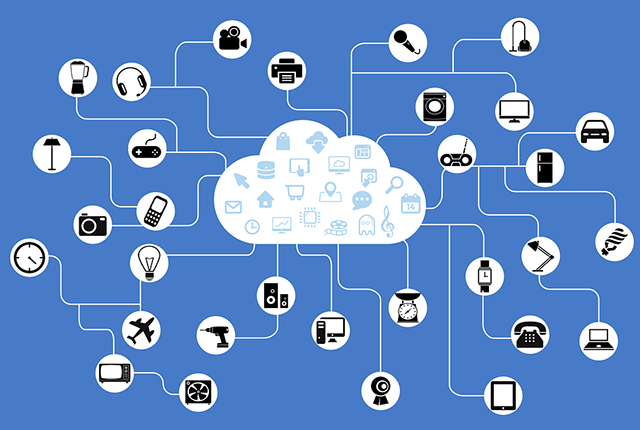Customer Service Transformation has become a must in a Digital World
5 May 2020
As the digital arm of banking takes control and navigates
the world population through these troubled times, consumers have high
expectations when it comes to their bank’s customer support and accessibility
of their finances. Bank customers have all sorts of needs and some are more complicated
than others, but either way they come to expect one thing; easy and instant
solutions.
With mobile wallets, banking apps, digital payments &
transactions and always-on customer support channels, banks are adapting a new
direction to satisfy their customers, and have come to realize that real
customer satisfaction and loyalty is attained through quick, efficient and
personalized customer support, especially during the COVID-19 outbreak.
So how can banks leverage their customer service efforts
in a digital-first world today?
Before deciding how to adapt current customer support
strategy to digital channels, banks need to pinpoint their most frequent
requests by customers and then determine the best implementation of a digital
solution for these requests. One advantage of having routine questions being
asked and processes being requested is that this pattern can easily be catered
to through automation and self-servicing software.
Even before the Coronavirus outbreak, Artificial
Intelligence (AI) and Machine Learning (ML) concepts were being applied in a
variety of ways to customer service, namely through chatbots on websites or
mobile apps that provide answers to common questions or as complex algorithms
for transaction processing, fraud detection and similar aspects of the backend
of finance.
No matter how advanced, secure or reliable automation
processes are, they are still missing a crucial part of customer service: the
human element. Taking care of customers is not just servicing them in an
efficient manner, it’s also connecting with them on a human level to deliver
the utmost personalized care and attention. Interpersonal relationships are
important, especially for customers who have been loyal to the bank and trust
it with their finances.
So it seems that although next-generation technologies are
keenly eyed by the finance community as the next big thing, the human element
is still an indispensable aspect of customer service. As such, it is the
combination of human empathy and robotic algorithms in customer service that
will differentiate banks from their competitors. To that length, it is critical
that the process itself is seamless in terms of switching from AI to a human
agent and that the customer does not wait between the switch, at a time when connecting
workflows seamlessly across a bank’s digital presence is not a luxury but a
need for speed and accuracy.
The final step for the digital transformation of customer
service is to provide contact agents with the necessary tools to understand and
relate to the bank’s customers. This is usually through a CRM platform that
holds a database of clients’ history, financial holdings, activities, and
relationships, offering comprehensive, detailed information on customers in one
place. This allows agents to have a full understanding of the person they are
trying to help and therefore serve them quickly and efficiently.
Once this flow of integrated systems is in place and the
customer experience is well thought-out, customer service efforts in banks are
empowered to go from being reactive to consumer issues to being a proactive entity
that delivers customer satisfaction at a time when it is most needed.
Tags
Coronavirus, COVID-19, customer service, customer
experience, CRM, digital services, customer support, AI, ML, Artificial
Intelligence, Machine Learning, digital transformation, chatbots, fraud
detection.
related articles

Mutually Beneficial Partnership Scenarios for Banks and FinTech Companies

Financial Health is What FinTech Should Be Empowering

Can the Middle East Bloom Into A Global FinTech Hub?

Setting Digital Banking Transformation Priorities During a Pandemic

The Challenges that FinTech Startups in Emerging Markets need to consider

Four FinTech Elements Affecting the Retail Banking Ecosystem

The State of Biometrics in 2020 and Beyond

Regulatory Technology is the Unsung Hero of Digital Transformation

Bridging the Digital Divide with APIs

The Impact of IoT on FinTech & Banking

Shifting from Disruption to Innovation through FinTech Partnerships in COVID19 pandemic.

Going Cashless is the new way to go in a Post-Coronavirus Future

Relevance of Scheduling Apps for Bank Appointments is Skyrocketing

How is Banking Changing with COVID-19?

The Opportunities and Threats of FinTech during COVID-19

How FinTech can relate to the Healthcare Industry

The Impact of Coronavirus on the Financial Sector

FinTech’s Critical Role in the Battle Against the Coronavirus

Humanizing Services through Smart Banking Technologies

MSME Lending & FinTech: What to Expect in 2020

How Digital Innovation can Transform the Future of Banks

Banking Experts Forecast Key FinTech Trends in 2020

How FinTech is Changing the Finance Industry.

6 FinTech Trends That Will Transform Banking In 2020

FinTech Trends To Keep An Eye On In 2020

How FinTech Can Contribute To Healthcare

How many digital Middle Eastern companies have unlocked their full innovative potential?

Top Five MENA Venture Capital Investments in Q3 2019

Singapore FinTech Festival 2019: A Meeting of the Minds

Digital Banking vs Physical Branches: Competition Not Mandatory

BEBA presents the Digital Assets & Artificial Intelligence: Shaping the Future event

Five Technologies Expected to Reshape FinTech in 2020

5 Mobile Trends To Transform The Future Of Payments

Why Is Digital Transformation A Vital Step For Today’s Banks?
.jpg)
Egypt’s First Artificial Intelligence Faculty launched at Kafr El Sheikh University


 0
0
 3.1k
3.1k 



Comments